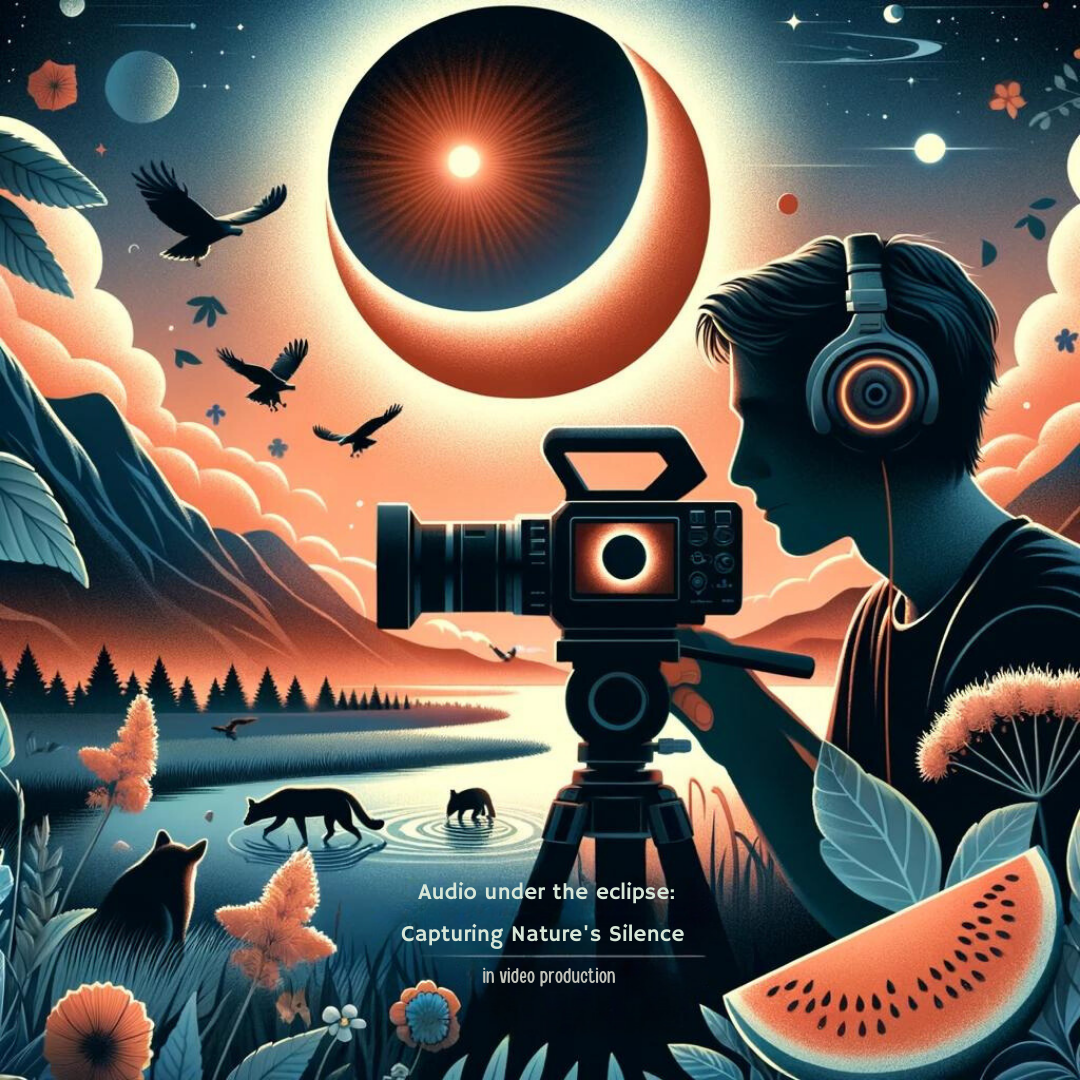
When it comes to video production, audio is often the most overlooked aspect of the process but it’s incredibly important. Audio can set the tone, enhance the mood and deepen the emotion of a film. A well-crafted soundtrack can really elevate even the most basic of visuals. And when it comes to nature movies, capturing the sounds of the natural world can transport your audience to a new place altogether.
While capturing high-quality audio is important for any project, it becomes a different kind of challenge when recording within the great outdoors. Whether capturing shots of birds in flight, a rushing waterfall or just the wind rustling through the trees – it’s important to get it just right.
One great time to capture nature sounds is during a full solar or lunar eclipse. This brief, spectacular event can create an entirely new experience of natural audio. When the moon completely covers the sun or the earth’s shadow completely engulfs the moon you have the makings of a truly unique, audio-centric production.
Why Solar and Lunar Eclipses are Perfect for Audio Capture
Solar and lunar eclipses are rare, and a joy to experience. The peaceful blue sky can darkene and the sounds of nature around you can change quite dramatically with the moon’s shadow. Birdsong may become hushed, the wind may pick up, and you might even be able to pick up on lesser known sounds just beneath the surface. This peaceful, otherworldly moment has been a source of inspiration for artists, writers, and scientists for millennia and has some wonderful potential for cinematographers.
Due to the rarity of these events, you will need to carefully plan for audio capture during an eclipse. You need to be prepared for a short window of time to make sure that you do not miss the unique sounds of the eclipse. You will need to make sure that all equipment is ready and organized and that you have taken tests in advance to make sure that the sound quality is just where you want it. You will also need to pay attention to any legal or safety issues and make sure you are in a safe spaceto capture the sounds.
Equipment and Preparation
Capturing audio elements during a solar or lunar eclipse is largely the same as capturing audio for any production – the big difference being the time sensitivity required. Good equipment is absolutely essential just as it is for any video work. And just as in any video production, you will want to use a good shotgun microphone or even perhaps an all-weather lavalier microphone. You will also want to be sure that your audio levels are not peaking, so a portable digital recorder with internal limiter and compressor will be essential.
When it comes to video production you want to make sure you are as prepared as possible so a good checklist and a collection of backups will be important for both audio and video efforts. Make sure to double check your equipment and supplies multiple times and be sure to have a plan in place for troubleshooting or needing an alternative. Finally, it is always best to secure permissions for where you plan to capture your audio so you can avoid any last-minute conflicts.
Capturing the Sounds of the Eclipse
Once you have your equipment and permissions secured and your sound levels set accurately, you will be ready to capture the sounds of the eclipse. The approach that you take with your audio capture is largely up to you and will depend on the desired effect you wish to achieve. If you are interested in capturing authentic nature sounds, then you will want to make sure to place yourself in the best position in relation to the eclipse to soak up the most audio in your capture. If on the other hand, you are looking for a more stylized experience, then you may want to try the opposite approach and focus on isolating singular sounds and exaggerating them to create the desired effect.
Post-Production Preparation
After your sounds have been captured during the natural spectacle, the post production process begins. Once the original audio clips are reviewed and contented, the final result will be a polished soundtrack that delivers the full impact of the solar or lunar eclipse being showcased. Be sure to play with different levels and compression settings to get the audio just right. You may also want to consider adding effects to give the sound an extra boost.
Overall, capturing the sounds of nature during an eclipse can be an incredibly rewarding experience. By being properly prepared, taking the necessary legal precautions and having the right equipment and back-ups, you can create the best possible nature soundtrack. Whether you want to capture the authentic sounds or create something stylized, the solar or lunar eclipse can be a great time to capture the best of nature’s ambient sounds and take your video production to the next level.
